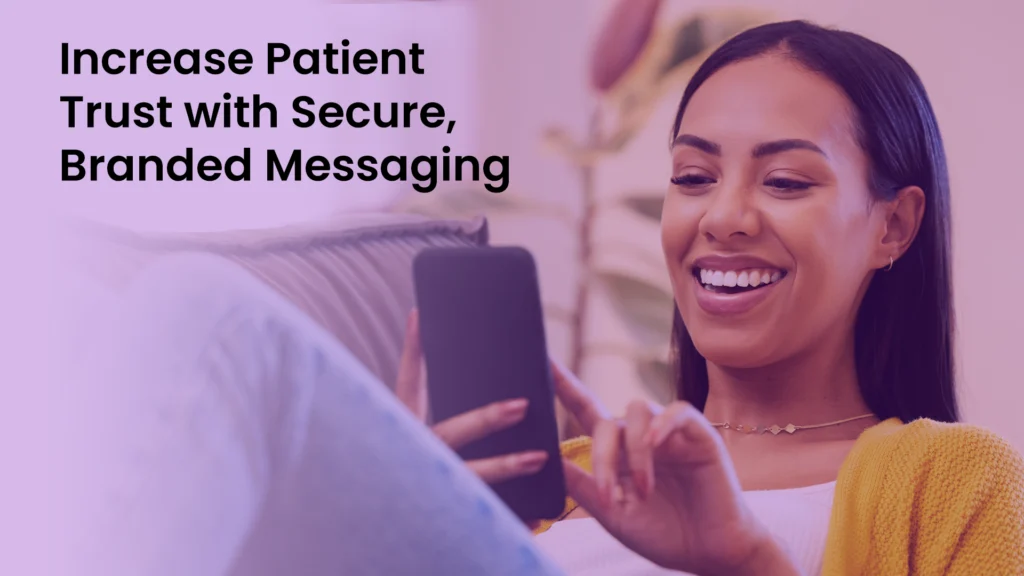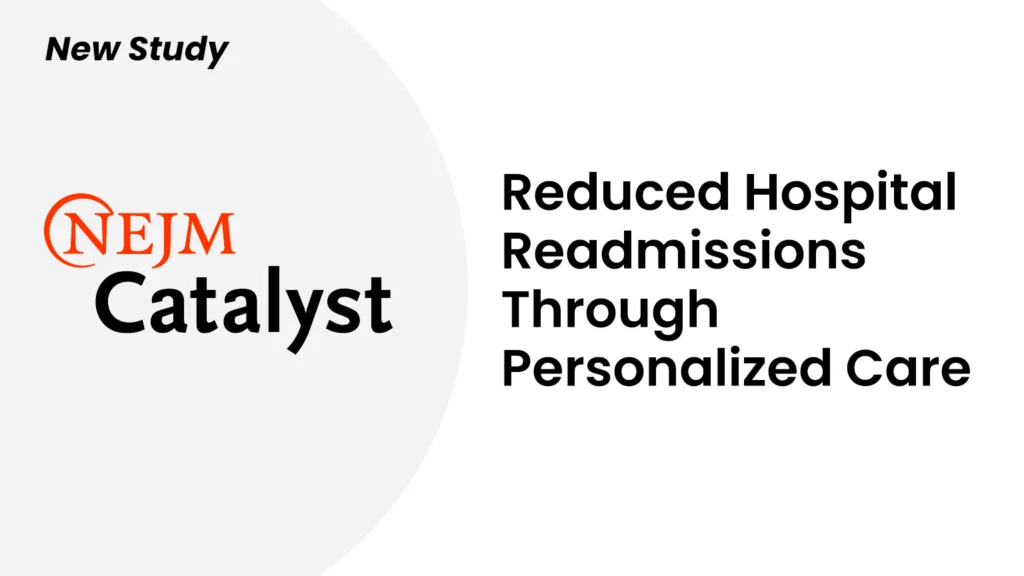Today’s healthcare system is tilting toward more consumer-centered and participatory medicine. According to a report by Ernst & Young (EY) and the American Hospital Association (AHA) Center for Health Innovation, this trend is forcing providers to embrace on-demand, connected, and data-driven patient engagement methods and technologies.
The COVID-19 pandemic has drastically accelerated this shift. During the first quarter of 2020, telehealth visits surged by 50 percent, compared to the previous year. By week 13, telehealth had increased by 154 percent compared with the same period in 2019. WELL’s own research indicates a permanent increase in telehealth visits, post-pandemic.
Post-vaccine, these shifts will revert slightly – but only slightly. Therefore, providers need to rapidly implement new patient engagement techniques and strategies. One such strategy is virtual care, allowing providers to safely attend to patients during lockdowns and stay-at-home guidelines. Now, as we prepare for a post-pandemic world, virtual patient engagement, an approach that encompasses telehealth and other virtual care solutions, is the new reality.
So, how can you optimize virtual patient engagement while maintaining standards of clinical excellence as you administer care virtually? Now more than ever, providers need to consider the following strategies to facilitate virtual patient engagement and interaction. Moreover, you should develop a value-based relationship with patients that is based on mutual trust and credibility.
Improve patient communications
Patient engagement is downstream of the quality of patient communication. And the truth is, for the most part, provider-patient communication is subpar. Many providers learned this the hard way this year when they suddenly had to perform unprecedented amounts of virtual patient engagement, and their tools were lacking.
What providers need is a platform that supports conversational communication between staff and patients, both automated and manual. The platform should integrate and support various modes of communication, especially SMS and other forms of messaging. This way, healthcare providers can communicate with their patients using their preferred media.
For example, Houston Methodist in Texas experienced a surge in virtual care visits when the pandemic broke out. Compared to their pre-COVID engagement rates, they had 50 times more virtual visits. The healthcare institution coordinated with WELL and created a virtual waiting room for over 30 of their outpatient clinics.
“The ability to communicate back and forth,” said Tesha Montgomery, Vice President of Operations and Patient Access at Houston Methodist, “assured patients that we were there for them both virtually and in-person. It was crucial as we continued to safely provide care in the midst of this pandemic.”
Adopt all-in-one portal solutions
Following the popularization of electronic health records (EHRs) and electronic medical records (EMRs), the use of patient portals has become increasingly prominent for healthcare providers of all sizes and specialties. Such platforms enhance the quality of care while enabling greater virtual patient engagement.
Modern-day providers face the demand for integrating health records across multiple data sources while segregating new products to a diverse audience and aggregating data into a single customer view.
All-in-one portals can not only boost virtual patient engagement but also provide secure, online access to personal health information. This includes lab results, medication lists, allergies, immunization, and discharge data. They can also permit patient-provider communication using secure messaging, payment and appointment management, and prescription refill requests.
While such portals commonly include patient information, we should note that not all patient engagement platforms are equal. Your patient engagement platform should work as a powerful communication tool, delivering messaging that drives financial and clinical results.
A great example is Cerner, who has decided to integrate their patient portal with WELL to improve patient communication, reduce administrative time for clinicians and staff, and close the gap in communication in healthcare.
Prioritize interoperability
Virtual patient engagement tools are only as impactful as their ability to offer a true 360° view of the patient. This is why healthcare providers should vitally prioritize interoperability between their technologies and other existing patient engagement methods and systems.
System interoperability is the ability of different information systems, applications, and devices to access, integrate, exchange, and cooperatively use data in a coordinated way, within and across the organization. The goal of system interoperability for any provider is to facilitate access to and retrieval of information in order to enable safe, timely, effective, efficient, and equitable patient-centered care.
Perceptive healthcare providers are now leveraging virtual patient engagement tools such as WELL and patients are responding positively. Such tools can integrate seamlessly with existing clinical and administrative systems, driving the adoption of patient portals, payment systems, and more.
Once their health information is entered into a system, it becomes available to the patient whenever they need it, wherever they are. Communication becomes effective and efficient. This is the essence of interoperability in healthcare, according to Scott Wallace, the President and CEO of the National Alliance for Health Information Technology (Alliance).
Streamline healthcare reminders
One of the barriers to patient engagement is the sheer volume of patients that need interaction. In today’s age of healthcare consumerism, the focus has shifted from volume to value care. Consequently, healthcare providers should now prioritize 1:1 communication and reminders.
To boost virtual patient interaction, providers need to seamlessly combine outbound communication. This enhances healthcare reminders, increases patient responses, and decreases patient leakage.
They can do this through automated phone messages and emails, or through patient engagement solutions that unifies communications by integrating your EHR and patient-facing vendors. Case studies show that reminders and constant patient engagement can decrease no-shows significantly, increase appointment confirmations, all of which have direct implications on revenue.
WELL offers an unlimited amount of configurable automation rules that streamline repetitive messaging tasks. Moreover, providers can restrict configuration and management of automations to specific users, which enables complete oversight. Furthermore, with its EHR integration, providers can schedule any form of outreach, from automated appointment reminders to thank you messages.
Offer virtual visits
One key benefit of telemedicine is the ability to address patients’ concerns virtually via video chat or web messaging. Often regarded as ‘high-tech’ care, it can also support meaningful connections with healthcare consumers, who may require ‘high-touch’ care remotely.
A recent survey revealed that over 42 percent of patients now use telehealth services. Unsurprisingly, patients have come to appreciate not just the convenience of video chatting with their caregivers, but also its cost-effectiveness. Those surveyed stated why they prefer telehealth visits:
- 65 percent of patients cite convenience
- 63 percent says they don’t have to worry about exposure to other potentially sick individuals
- 44 percent believes it easier to schedule than an in-office appointment
Safety, convenience, and cost-effectiveness are some of the key themes that emerged during the COVID-19 crisis. Going forward, these will most likely continue to impact healthcare consumers’ behavior post-pandemic.
This is why communication platforms with video-enabled functionality are vital to providers’ patient engagement techniques and strategies. Such technologies allow them to connect better with their patients and offer this new form of care.
Moreover, to maximize telehealth investments, providers should integrate with an automated patient communications solution like WELL. Automated message delivery, especially with invitations, reminders, and no-show follow-ups, helps to coordinate virtual care easily. This saves valuable staff resources and time while greatly improving patient satisfaction.
Recognize the consumer aspect
Remember, when you start implementing virtual patient engagement strategies, you are no longer delivering the technologies to other physicians. You are delivering the technology directly to consumers, and it’s a completely different animal.
With doctors and other health professionals, less than optimal interfaces are tolerable but with consumers, this is unacceptable. A virtual patient engagement platform should provide speed, intuitiveness, and ease. This improvement happened for Tandem Health, a multi-specialty community health provider in South Carolina. With their WELL integration, they simplified communications by moving away from their clunky patient portal messaging system to convenient, secure text messaging.
As Marty Martin, Director of Clinical Informatics at Tandem, said, “Just walk into any waiting room. Everyone is on their phones, texting. With WELL, we are meeting them where they already are.”
Everyone who’s got a stake in the healthcare industry needs to start recognizing patients as consumers. This includes understanding how they can provide what the patients want and care about. Millennials, in particular, have grown up in an age of consumer-grade digital habits. As such, they cannot fathom why healthcare is any different.
The age of healthcare consumerism has arrived. As the healthcare industry steadily moves into the 21st century, providers need to empower patients to be smarter, healthier, and better informed. Leveraging the power of digital technology to lift the barriers to patient engagement is a great first step. ♥



